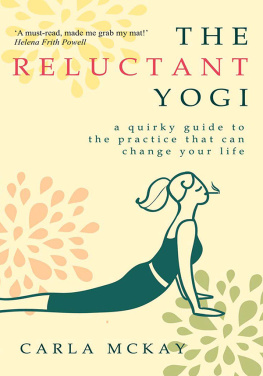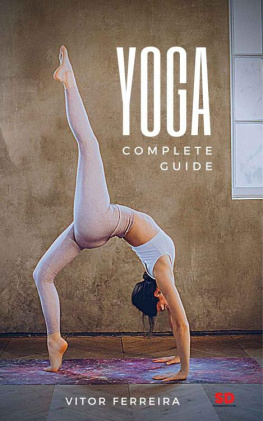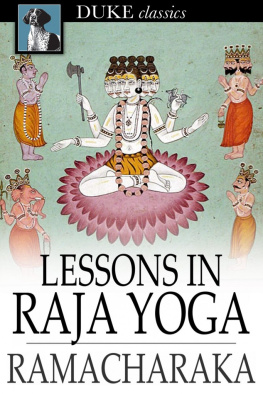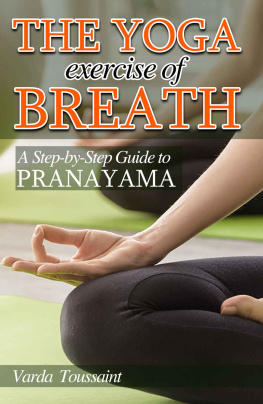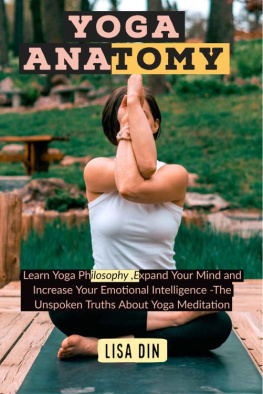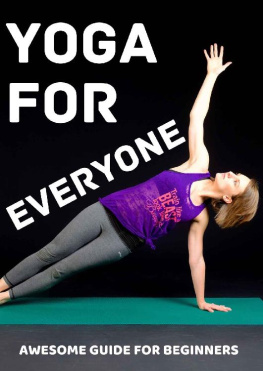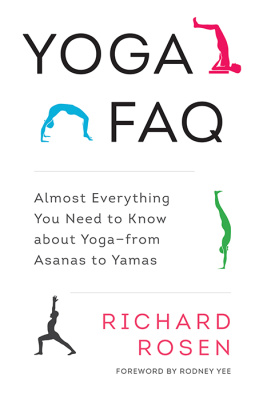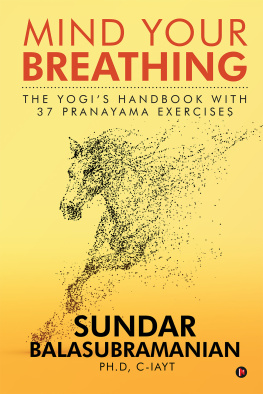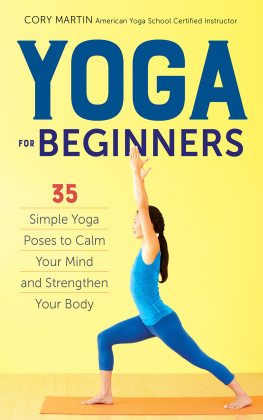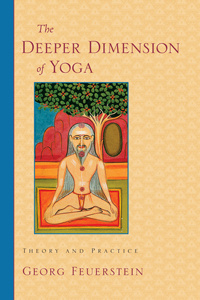The ancient practice of yoga has been hijacked by celebrities, new-age nuts and airhead fashionistas as a hip tool for modern living. Like any other trend with money-making potential, a whole raft of self appointed gurus have, over the years, arrived on the yoga scene, turning themselves into yoga brands complete with multi-media spin-offs, book deals, fashion lines and franchises.
Of course there are many devotees who regard yoga as the rigorous physical, mental and spiritual discipline it is. And then there are some who think that, as with vanilla ice cream, you can just add in your favourite sauce. Feel like saying the Lords Prayer while youre in Downward Dog? Try Christian yoga. Want to ogle others doing Downward Dog? Nude yoga might be for you. Fancy taking your own pet along to demonstrate Downward Dog? Doga (yoga for dogs) is coming to somewhere near you soon.
All of this is sad because, as I have discovered, later rather than sooner in my life, yoga in the traditional sense is for everyone, whatever their age, build or fitness level. In fact, the very people who would benefit from it the most, are likely to be those who are most put off by the flim flam surrounding the yoga world, as I was for many years. This book is an attempt to redress the balance, to investigate what yoga is really all about, and to assess, without fear or favour, what it has to offer.
It is also the story of my own conversion from someone who scoffed at the very idea of yoga to someone who tries to get everyone she meets, from the boiler repair man to the chairman of the board, to give it a go.
Introduction:
Do Not Attempt This at Home
Its early days in the quest for eternal youth: I have been to my first yoga class and am lying face down on the sitting room carpet, arms outstretched with one leg tucked awkwardly under my torso in what I fondly imagine to be the pigeon pose, apparently good for opening ones hips. I hadnt realised mine were closed till earlier that day.
The dogs are licking my face trying to revive me when my daughter walks in and screams: Mum, what happened? I realise that from above, it probably looks as though a truck has run over me. Lesson One has been learned: never practise yoga in a room accessible to either other people or dogs.
Everybody was doing yoga; not just celebs with Gucci yoga mats (though they were much in evidence), but ordinary, quite rational people in the English countryside. It was said that yoga could change your life and boy, did mine need changing.
That year I had separated from my husband, for reasons that were everything to do with me, and had moved out of our shared Oxfordshire house into a small cottage in the same village. A cottage I then shared with my 16-year-old son, whose sweet nature was being severely tested by adolescence, and my 14 year old daughter who was just embarking on a colourful career of getting expelled from every school she went. Oh, and I was reaching an age where I could barely conceal my panic about aging and see every wrinkle grow.
Yoga was widely reported at this time to be transformative in every area of life: physical, mental and spiritual. Everyone agreed it was the thing to do. Even the dogs did it every morning when they woke up, admittedly confining it to the one pose they knew Downward Dog. All the buzz about yoga made me mutinous though. I could probably hack the poses (I had been good at gym in the dark ages), but I was definitely not going to chant Om or step reverentially into any room reeking of incense and decked out with Tibetan prayer flags. That kind of paraphernalia I associated with believers, with disciples, with bird-brained gullible fools who turned into Buddhists seconds after disembarking from the plane at Mumbai. Fatally, having been to the one class in the village hall, I put off going to another for a few years. It took that long to wear down my prejudice.
When I was growing up, no-one in the UK had really heard of yoga. It was at least a decade before middle-class kids trailed off to the East to find themselves. Physical exercise was pretty well confined to team sports and what used to be called physical jerks * , both of them optimally performed in the freezing cold. At the school I went to, we ran round muddy fields wielding hockey sticks (or, worse, lacrosse sticks) in raw chapped hands. My fingers were additionally blown up with a vicious kind of chilblain owing to poor circulation, their tips numb and white. It was torture. I infinitely preferred being inside the relatively less arctic gymnasium where we sprang over the horse in double woofs and hung from the wall bars. In those days I could shin up a rope like a monkey and hang nonchalantly upside down a skill I now seem to have lost, alas, although it hasnt been put to the test lately.
Then there was PT or PE at school sandwiched between double biology and maths which was something to be excused from (girls always had an excuse) at all costs. It could take almost any form, from what used to be called Swedish Gymnastics a form of free-standing exercises involving flexions and extensions of the major joints of the body to something even more gruesome that became popular in the 1960s, interpretative dance, in which you glided or galloped around the gym pretending to be flowers, or the wind, or a gazelle. After school it was of course up to you, and most people I knew never took any more strenuous exercise than raising a glass.
Nonetheless, people started to get serious about working out. Many of the trends in exercise since the sixties seem to have been triggered by books. Dr Kenneth H. Coopers groundbreaking book Aerobics was published in 1968, spawning a whole generation obsessed with cardio-vascular fitness; then came Jim Fixxs The Complete Book of Running in 1977 the best selling non-fiction hardcover book ever which gave rise to the global phenomenon of jogging. It took a bit of a knock when Jim Fixx, a formerly overweight magazine editor, was found dead by the side of a road in the New England countryside aged only 52. He had suffered a massive heart attack in the middle of a run. Yet, still people gallop, or more often shuffle on, and everyone from the nerd next door to world class eaters and party-goers like Oprah, Gordon Ramsey and Puff Daddy take part in marathons.
Yoga interest dates from the same time. It was in 1966, earlier than either of those, that B.K.S. Iyengar published his international bestseller Light on Yoga which renewed interest in yoga in the West, and remains the gold standard reference book for practitioners of Hatha yoga for its illustration and explanation of hundreds of asanas (yoga poses). Iyengar originally took up yoga to try to improve his poor health. His mother had given birth to him during a flu epidemic leaving him sickly and weak and she later succumbed to malaria, TB and typhoid. Eventually he became a yoga teacher in Pune, India, but it was a meeting with the violinist Yehudi Menuhin, who became his pupil, that led to international recognition. Menuhin wrote the foreword to Light on Yoga in which he says: The practice of yoga over the past 15 years has convinced me that most of our fundamental attitudes to life have their physical counterparts in the bodyAnd of Iyengar he remarked: He is my master and my Guru ever since I became his pupil and followed his course of exercises, I have not had any drug or medicine to cure any illness. I would trust him completely with my sons on top of a mountain in a thunderstorm, and know that he would bring them back unharmed. Now, thats what I call a testimonial.

